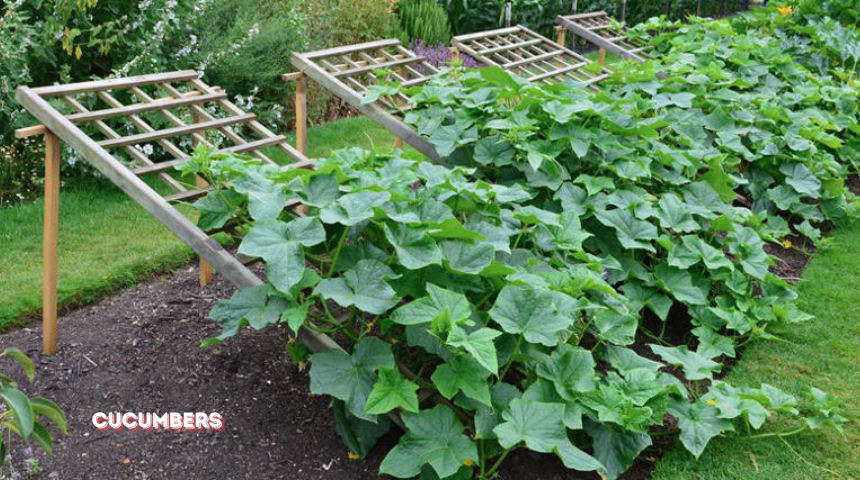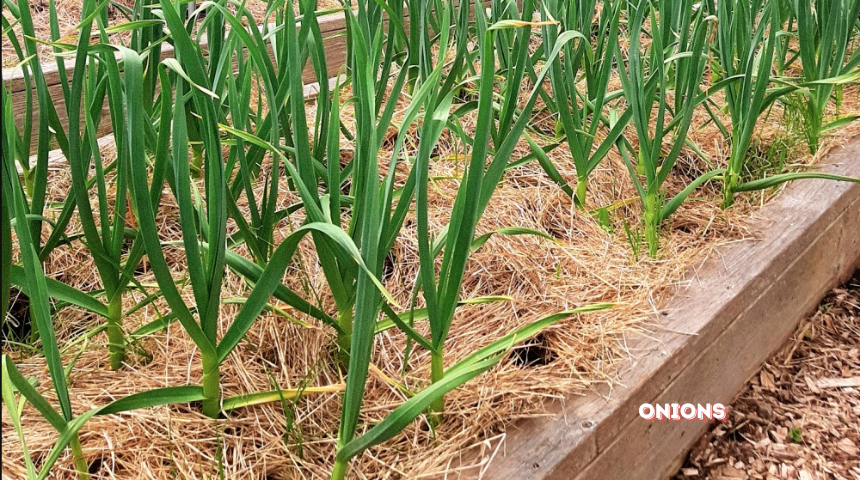Which vegetables grow best in raised beds? If you’re like me and enjoy gardening, you know raised beds offer many advantages. But not all plants thrive equally.
Over the years, I’ve discovered that some vegetables stand out. Raised beds provide better drainage and warmer soil, which boosts plant growth. Root vegetables, like carrots and radishes, benefit the most.
Leafy greens like lettuce and spinach also do exceptionally well. I find that by using a loose, rich soil mix, the yields are fantastic. Keep reading, and I’ll share the top vegetables you should consider for your raised beds.
Which Vegetables Grow Best In Raised Beds?
Certain vegetables thrive in raised beds. Carrots are a top choice because they need loose, deep soil. I also recommend radishes and beets for their similar needs.
Leafy greens like spinach, lettuce, and kale perform well. They love the fast-draining soil. Raised beds are also great for tomatoes and peppers. These plants need warmer soil, which raised beds provide.
I’ve found that zucchini and cucumbers grow well too. The elevated beds give their roots plenty of space. For a productive garden, stick to these types of vegetables.

Anticipate the Size and Spread.
When planning your raised bed, always consider how much space each vegetable needs. Zucchini and pumpkins can take up a lot of room. I usually plant these near the edges, where they can spread without crowding others.
Keep In Mind What Lies Beneath.
The soil depth matters, especially for root vegetables. I make sure my raised beds have at least 12-18 inches of loose soil for crops like carrots and parsnips to grow properly.
Pick Compact Varieties.
I always go for compact or dwarf varieties in raised beds. Bush beans, baby carrots, and patio tomatoes save space while still offering great yields.
Prioritize Veggies That Cannot Find Another Home.
Some plants, like leafy greens and root vegetables, do best in raised beds. I prioritize these crops since they struggle in traditional garden spaces due to poor soil or pests.
Consider the Sun Exposure.
Raised beds warm up quickly, which is perfect for sun-loving plants. I place tomatoes, peppers, and eggplants in the sunniest spots of my raised beds for the best growth.
Select Vegetables That Need Warm Soil.
Raised beds offer better drainage, which keeps the soil warm. I plant heat-loving vegetables like tomatoes, cucumbers, and peppers, which thrive in these conditions.
Crop Rotation Rules.
I practice crop rotation in my raised beds to keep the soil healthy. Each season, I switch out heavy feeders like tomatoes with nitrogen-fixing plants like beans to maintain balance.
The Best Vegetables To Grow In Raised Beds
Bush Beans
Bush beans are one of the best vegetables for raised beds, mainly because of their compact nature. Unlike pole beans, they don’t require a trellis or support, making them an easy choice for small spaces.
I plant bush beans in early spring, as they thrive in well-drained soil and grow quickly. The raised bed ensures they get the warmth they need, as the soil heats up faster than the ground.

Plus, bush beans are excellent nitrogen-fixers, improving the soil for future crops. When harvesting, I always get a generous yield, which is perfect for fresh salads and stir-fries.
Sweet and Hot Peppers
Peppers, whether sweet or hot, are a staple in my raised beds. They require warm, well-drained soil, and raised beds offer just that. The extra heat from the soil helps them thrive, especially in cooler climates.
I love growing both varieties because they add so much flavor and color to the garden. Sweet peppers, like bell peppers, are great for fresh eating, while hot peppers, such as jalapeños, bring heat to dishes.

One tip I always follow is to space the plants properly, as peppers need good airflow to prevent diseases like fungal infections. Staking them early in the season helps too, as the fruit can weigh the plant down.
Tomatoes
Tomatoes are a must-grow vegetable in raised beds. The warmth and drainage of the raised beds suit tomatoes perfectly. I prefer growing varieties like Roma and cherry tomatoes because they produce heavily and have fewer issues with pests.
I always stake or cage my tomato plants as they grow, giving them plenty of support. Raised beds also help prevent soil-borne diseases by keeping the plants’ foliage dry.

I’ve learned to water deeply but less frequently to encourage strong root growth. The raised bed helps the water drain well, preventing root rot, which is common in poorly drained soils.
Cucumbers
Cucumbers are another fantastic option for raised beds, especially the vining varieties. I always add a trellis or some type of support to the bed, which allows the vines to climb and saves space.

Raised beds help cucumbers grow better because the loose, fertile soil promotes strong root systems, while the elevated position improves airflow around the plants. This reduces the chances of common cucumber diseases like powdery mildew.
Plus, cucumbers grown in raised beds tend to have fewer issues with pests like slugs and snails. I usually plant burpless or pickling cucumbers, which thrive in this environment and provide crisp, delicious fruits throughout the summer.
Carrots
Carrots are a perfect crop for raised beds due to the deep, loose soil they need to develop long, straight roots. In traditional gardens, compacted soil often causes carrots to grow short or misshapen.

In raised beds, however, I can control the soil texture, ensuring it’s light and free from stones or debris. Varieties like Nantes are ideal for raised beds because they grow straight and uniform.
I sow carrot seeds in early spring, making sure to thin them out after they sprout. Raised beds also help with consistent moisture, which is crucial for proper carrot growth. I water regularly to prevent the soil from drying out, leading to smooth, tender carrots.
Melons
Melons, especially compact varieties like Sugar Baby watermelons or cantaloupes, do exceptionally well in raised beds. These fruits require warm, well-drained soil, and raised beds offer the perfect conditions.

I plant melons in the sunniest part of the garden, ensuring they get plenty of light throughout the growing season. One thing to note is that melons need a lot of space to sprawl.
I usually plant them near the edges of the bed so they can spread out onto the ground without smothering other plants. Raised beds also prevent the soil from becoming waterlogged, which is essential for growing sweet, flavorful melons.
Eggplant
Eggplants are another heat-loving vegetable that thrives in raised beds. The warm, loose soil in raised beds encourages faster growth and larger fruits. I prefer growing compact varieties, like Black Beauty, which fit well in the confined space of a raised bed.
I usually plant eggplants in the middle of the bed to ensure they get full sun and enough room to spread. They do well in raised beds because the soil doesn’t stay too wet, which can cause root rot.

I stake my eggplants as they grow to support the weight of the fruit and prevent the branches from breaking. With regular watering and feeding, eggplants flourish in the elevated environment of raised beds.
Sweet Potatoes
Sweet potatoes are an excellent choice for raised beds due to their love of loose, well-drained soil. The vines need plenty of space to spread, so I plant them at the edges of the bed, allowing them to grow outward.

Raised beds help the soil stay warm, which is crucial for sweet potatoes to develop large, healthy tubers. I find that the loose soil in raised beds makes harvesting sweet potatoes easier, as it reduces the risk of damaging the tubers during digging.
Sweet potatoes also do well in slightly sandy soils, which is easy to achieve in a raised bed with the right soil mix.
Leafy Greens
Leafy greens like lettuce, spinach, and kale are ideal for raised beds. These cool-season crops prefer the quick-draining soil and good air circulation that raised beds provide. I plant them in early spring or late summer when the temperatures are cooler.

Raised beds allow me to start my greens earlier in the season, as the soil warms up faster. Leafy greens also benefit from the controlled environment of a raised bed, where I can easily manage pests like slugs. The quick growth of leafy greens means I can enjoy multiple harvests throughout the growing season.
Onions
Onions are well-suited for raised beds because they require loose, well-drained soil for their bulbs to grow large. I plant onions in rows, leaving enough space for the bulbs to expand.

Raised beds allow for better control over soil moisture, which is key to preventing diseases like onion rot. With good airflow and consistent watering, onions grow beautifully in raised beds.
I usually plant a mix of varieties, including red, white, and yellow onions, for a diverse harvest.
Radishes, Turnips, Shallots, Garlic
These root vegetables thrive in the controlled environment of raised beds. Radishes and turnips grow quickly and are perfect for early spring planting.
The loose soil allows for easy root development, resulting in uniform, tasty crops. Shallots and garlic benefit from the same conditions, with raised beds providing better drainage and preventing waterlogging.
I plant garlic in the fall, letting it overwinter in the raised bed, where it can develop strong roots before sprouting in the spring. Raised beds make it easy to grow these root crops in succession, ensuring a continuous harvest throughout the year.
FAQ
Can I grow root vegetables in a raised bed?
Yes! Carrots, radishes, and beets do well in the loose, deep soil of raised beds.
How often should I water raised bed vegetables?
It depends on the crop, but I recommend watering deeply once or twice a week to encourage strong roots.
Do raised beds need more fertilizer?
Raised beds can drain nutrients faster, so I feed my plants with a balanced fertilizer every few weeks to keep them thriving.
Conclusion
Growing vegetables in raised beds has been a game changer for me. Raised beds provide the ideal conditions for so many crops, making gardening both easier and more productive. The loose, well-drained soil benefits carrots, radishes, and root vegetables.
Warm-season crops like tomatoes, peppers, and eggplant thrive in the warmer environment raised beds create. Plus, leafy greens like spinach and lettuce grow fast and stay healthy thanks to better air circulation.
The flexibility raised beds offer has allowed me to grow various vegetables, even in small spaces. From bush beans to melons, I’ve learned that you can maximize both yield and quality with the right setup.
The key is to pick vegetables that suit the space and conditions of a raised bed and to plan your garden carefully. If you’re just starting with raised beds, stick to veggies that grow well in these conditions.
I promise, your garden will flourish with just a little attention and care. Experiment with crop rotation and companion planting to keep the soil healthy, and soon, you’ll be harvesting fresh produce throughout the season.



